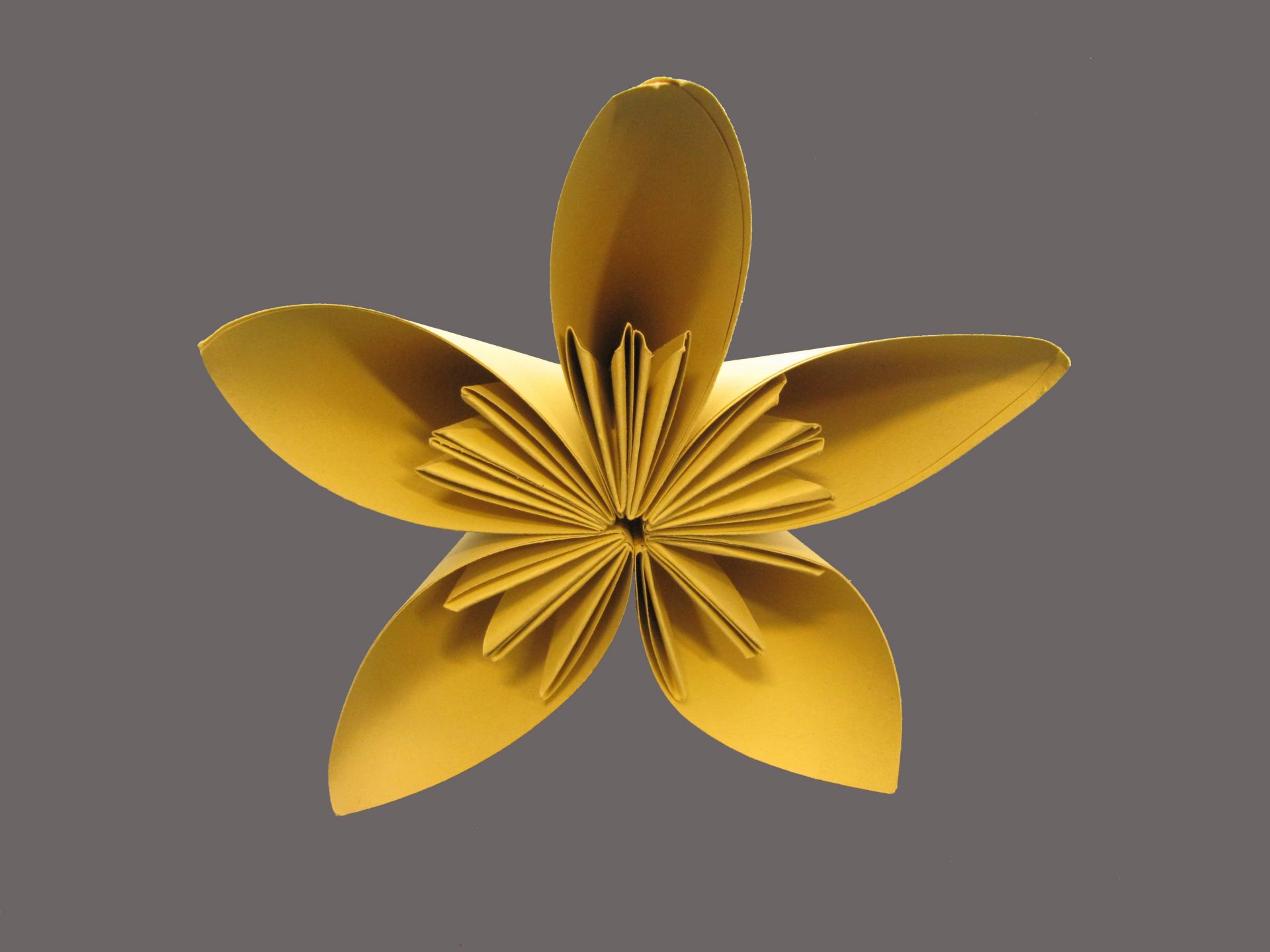The Jigsaw of Recovery: caring for anxiety
Living with anxiety is far from easy. Not only is it exhausting to be sent into a state of panic by the smallest of troubles, but also, it places a major strain on
relationships, causing yet further anxiety and stress for all concerned. Very rarely will two people describe their experiences in the same way, making it very difficult for those around the individual, including healthcare professionals, to know what to do or say.
I sought materials which represented the delicate nature of caring for someone with anxiety and selected origami, as it enabled me to learn a new skill, in the same way that I had to be creative in learning how to react to my mother when she was panicking. It is a delicate art, representing anxiety and also the situation in which I felt placed; a single wrong move could have caused everything to fall apart. I also wanted to create something which required building blocks to represent the major pieces to my mother’s recovery. This is why I chose the flower, as each petal represents a factor which was crucial to my mother getting better. I entitled the piece, ‘The Jigsaw of Recovery: caring for anxiety’, as the petals represent the essential pieces required to put the person back to how they once were; a process which requires time, and demands patience from the carer.

I loved this piece very much. This particularly appeals to me as I am very close to someone who from time to time has very bad episodes of anxiety. Hearing about how you helped your mother is so inspiring because it gives me ideas on how I can try and make a difference in the lives of those close to me. The portrayal of the flower is brilliant because it can show how fragile humans can really be and how something that may seem very insignificant to others, can be a large trigger to those with anxiety. I think that origami was a perfect portrayal as it also represents the time and gentleness needed to help support someone.
I think this piece is a beautiful reminder that there are many people who suffer with anxiety and how something like anxiety can affect people’s daily lives in many ways and being able to recognise that is so important when it comes to understanding people.
I think many people are unaware of how invisible anxiety can be, how to us people may seem fine but behind closed doors are really suffering, in a battle with their thoughts locked away in their own minds.
In addition to this the artists story also shows how it affect the lives of people around them even when they do not mean to cause harm.
This piece for me shows how there is beauty in simplicity and that sometimes taking a moment to step back and clear your mind is such a calming way to release any built-up tension and emotions and focus on solely yourself.
This piece reminds me that putting someone back together can be a particularly delicate process. It takes a long time, and sometimes it can feel like the jigsaw won’t ever be complete. As it can often be new and frightening to take on this responsibility, hearing about your journey alongside your mother is inspirational, I think we often forget how difficult it can be for us to see our loved ones in such pain.
Choosing origami is representative of the task required of many relatives, to learn new communication skills and techniques to understand our loved ones better during their times of distress and need.
This piece is simplistic in its colour, but complex in its design and the ability required to produce it – and I think this highlights the variety that carers experience during the process of helping someone to get better. It’s important to take time to care for yourself, simplify things and focus, even if you have this responsibility.